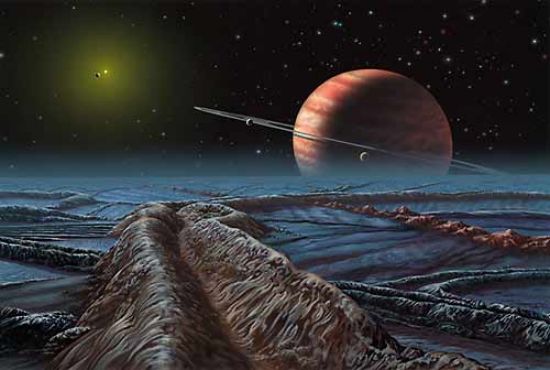
|
Credit: Copyright 2000
Lynette Cook
Explanation:
After the latest round of
discovery announcements,
the list of known
worlds
of distant suns has
grown to 50.
While
extrasolar planet
discoveries are sure to continue,
none - so far - points
clearly to another planetary system
like our own.
Take, for example, the newly discovered
parent star
HD38529.
Shining in Earth's night sky at 6th magnitude, this sun-like
star lies 137 light-years away in the
constellation Orion.
Like most of the
known
extrasolar planets, HD38529's planet
was discovered by detecting the telltale
Doppler wobble
in the parent star's spectrum.
The data reveal that this planet orbits once every 14.3 days
at an average of only 0.13 times the Earth-Sun distance
and has a minimum of 0.77 Jupiter masses (about 240
Earth masses).
There is
even evidence
in the wobble data that HD38529,
and other stars with one known planet have additional massive
planets orbiting them.
In
this dramatic artist's vision, HD38529 and its newfound
world are viewed from the moon of another massive
ringed planet orbiting farther out.
The ringed planet's moon is imagined to have a thin atmosphere
and a surface covered with
icy sheets and ridges similar to those found on Jupiter's
moon Europa.
|
January February March April May June July August September October November December |
| ||||||||||||||||||||||||||||||||||||||||||||||||
NASA Web Site Statements, Warnings, and Disclaimers
NASA Official: Jay Norris. Specific rights apply.
A service of: LHEA at NASA / GSFC
& Michigan Tech. U.
Based on Astronomy Picture
Of the Day
Publications with keywords: extrasolar planet - planet - LINEAR
Publications with words: extrasolar planet - planet - LINEAR
See also:
